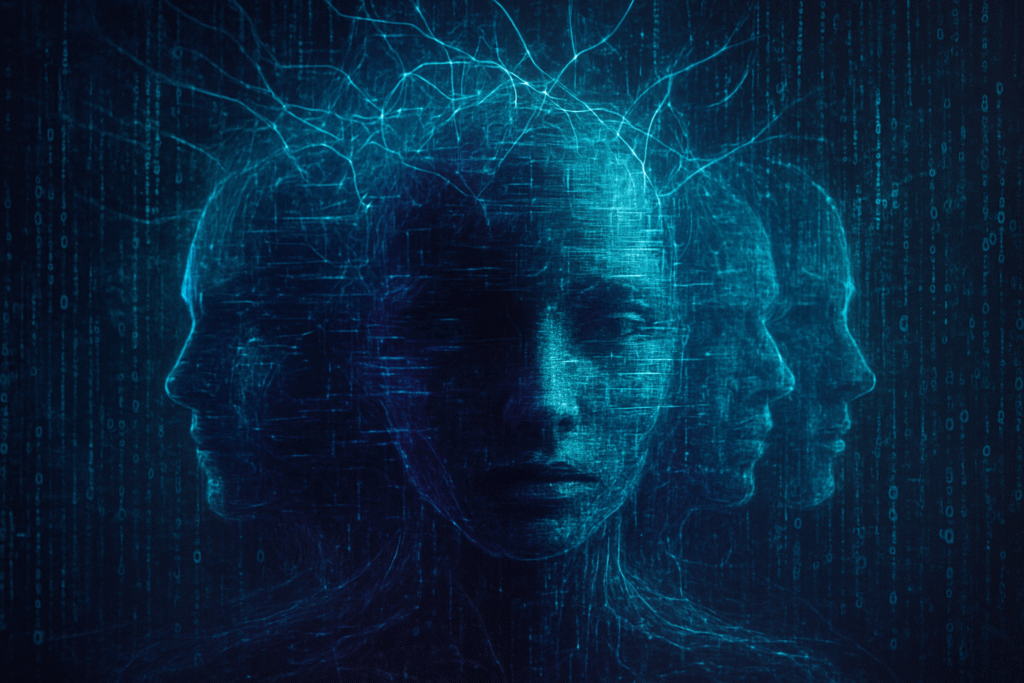
The digital landscape is increasingly under siege from a new, insidious threat: hyper-realistic AI-generated content, commonly known as deepfakes. These sophisticated synthetic videos, photos, and audio recordings are becoming virtually indistinguishable from authentic media, posing an escalating challenge that threatens to unravel public trust, compromise security, and undermine the very fabric of truth in our interconnected world. As of November 11, 2025, the proliferation of deepfakes has reached unprecedented levels, creating a complex "arms race" between those who wield this powerful AI for deception and those desperately striving to build a defense.
The immediate significance of this challenge cannot be overstated. Deepfakes are no longer theoretical threats; they are actively being deployed in disinformation campaigns, sophisticated financial fraud schemes, and privacy violations, with real-world consequences already costing individuals and corporations millions. The ease of access to deepfake creation tools, coupled with the sheer volume of synthetic content, is pushing detection capabilities to their limits and leaving humans alarmingly vulnerable to deception.
The Technical Trenches: Unpacking Deepfake Detection
The battle against deepfakes is being fought in the technical trenches, where advanced AI and machine learning algorithms are pitted against ever-evolving generative models. Unlike previous approaches that relied on simpler image forensics or metadata analysis, modern deepfake detection delves deep into the intrinsic content of media, searching for subtle, software-induced artifacts imperceptible to the human eye.
Specific technical details for recognizing AI-generated content include scrutinizing facial inconsistencies, such as unnatural blinking patterns, inconsistent eye movements, lip-sync mismatches, and irregularities in skin texture or micro-expressions. Deepfakes often struggle with maintaining consistent lighting and shadows that align with the environment, leading to unnatural highlights or mismatched shadows. In videos, temporal incoherence—flickering or jitter between frames—can betray manipulation. Furthermore, algorithms look for repeated patterns, pixel anomalies, edge distortions, and unique algorithmic fingerprints left by the generative AI models themselves. For instance, detecting impossible pitch transitions in voices or subtle discrepancies in noise patterns can be key indicators.
These sophisticated techniques represent a significant departure from traditional methods. Where old forensics might examine metadata (often stripped by social media) or obvious signs of editing, AI-based detection focuses on microscopic inconsistencies and statistical patterns inherent in machine-generated content. The adversarial nature of this field means detection methods must constantly adapt, as deepfake creators rapidly update their techniques to circumvent identified weaknesses. Initial reactions from the AI research community and industry experts acknowledge this as a critical and ongoing "arms race." There is widespread recognition of the growing threat and an urgent call for collaborative research, as evidenced by initiatives like Meta's (NASDAQ: META) Deepfake Detection Challenge. Experts, however, caution about detector limitations, including susceptibility to adversarial attacks, challenges with low-quality or compressed video, and the need for extensive, diverse training datasets to prevent bias and improve generalization.
Corporate Crossroads: Deepfakes and the Tech Industry
The escalating challenge of deepfakes has created both immense risks and significant opportunities across the tech industry, reshaping competitive landscapes and forcing companies to rethink their strategic positioning.
A burgeoning market for deepfake detection and content authentication solutions is rapidly expanding, projected to grow at a Compound Annual Growth Rate (CAGR) of 37.45% from 2023 to 2033. This growth is primarily benefiting startups and specialized AI companies that are developing cutting-edge detection capabilities. Companies like Quantum Integrity, Sensity, OARO, pi-labs, Kroop AI, Zero Defend Security (Vastav AI), Resemble AI, OpenOrigins, Breacher.ai, DuckDuckGoose AI, Clarity, Reality Defender, Paravision, Sentinel AI, Datambit, and HyperVerge are carving out strategic advantages by offering robust solutions for real-time analysis, visual threat intelligence, and digital identity verification. Tech giants like Intel (NASDAQ: INTC) with its "FakeCatcher" tool, and Pindrop (for call center fraud protection), are also significant players. These firms stand to gain by helping organizations mitigate financial fraud, protect assets, ensure compliance, and maintain operational resilience.
Major AI labs and tech giants, including Microsoft (NASDAQ: MSFT), Google (NASDAQ: GOOGL), and Amazon Web Services (AWS) (NASDAQ: AMZN), face a dual challenge. As developers of foundational generative AI technologies, they must also invest heavily in ethical AI, transparency, and robust countermeasures. Their brand reputation and user trust are directly tied to their ability to effectively detect and label AI-generated content. Platforms like Meta (NASDAQ: META) and TikTok are implementing internal systems to flag AI content and encourage creator labeling, often under increasing regulatory pressure from bodies like the EU with its AI Act. The constant innovation in deepfake creation forces these companies into an ongoing "arms race," driving up research and development costs. Strategic partnerships with specialized startups and academic institutions are becoming crucial for strengthening their detection capabilities and combating misinformation effectively.
Deepfakes pose significant disruption to existing products and services. Social media platforms are highly vulnerable to the spread of misinformation, risking erosion of user trust. Banking and financial services face escalating identity theft, document fraud, and "vishing" scams where deepfake voices impersonate executives to authorize fraudulent transactions, leading to millions in losses. The news and media industry struggles with credibility as deepfakes blur the lines of truth. Even corporate communications and e-commerce are at risk from impersonation and deceptive content. Companies that can credibly demonstrate their commitment to "Trusted AI," integrate comprehensive security solutions, develop content authenticity systems (e.g., watermarks, blockchain), and offer compliance advisory services will gain a significant competitive advantage in this evolving landscape.
The Broader Canvas: Societal Implications and the 'Perception Gap'
The deepfake phenomenon is more than a technical challenge; it is a profound societal disruption that fits into the broader AI landscape as a direct consequence of advancements in generative AI, particularly models like Generative Adversarial Networks (GANs) and diffusion models. These technologies, once confined to research labs, have democratized deception, allowing anyone with basic skills to create convincing synthetic media.
The societal impacts are far-reaching. Deepfakes are potent tools for political manipulation, used to spread misinformation, undermine trust in leaders, and potentially influence elections. They exacerbate the problem of fake news, making it increasingly difficult for individuals to discern truth from falsehood, with fake news costing the global economy billions annually. Privacy concerns are paramount, with deepfakes being used for non-consensual explicit content, identity theft, and exploitation of individuals' likenesses without consent. The corporate world faces new threats, from CEO impersonation scams leading to massive financial losses to stock market manipulation based on fabricated information.
At the core of these concerns lies the erosion of trust, the amplification of disinformation, and the emergence of a dangerous 'perception gap'. As the line between reality and fabrication blurs, people become skeptical of all digital content, leading to a general atmosphere of doubt. This "zero-trust society" can have devastating implications for democratic processes, law enforcement, and the credibility of the media. Deepfakes are powerful tools for spreading disinformation—incorrect information shared with malicious intent—more effectively deceiving viewers than traditional misinformation and jeopardizing the factual basis of public discourse. The 'perception gap' refers to the growing disconnect between what is real and what is perceived as real, compounded by the inability of humans (and often AI tools) to reliably detect deepfakes. This can lead to "differentiation fatigue" and cynicism, where audiences choose indifference over critical thinking, potentially dismissing legitimate evidence as "fake."
Comparing this to previous AI milestones, deepfakes represent a unique evolution. Unlike simple digital editing, deepfakes leverage machine learning to create content that is far more convincing and accessible than "shallow fakes." This "democratization of deception" enables malicious actors to target individuals at an unprecedented scale. Deepfakes "weaponize human perception itself," exploiting our innate trust in visual and auditory evidence, making them exceptionally potent tools for deception that can bypass conventional security measures.
The Horizon: Future Battlegrounds and Expert Predictions
The future of deepfakes and their detection is characterized by a relentless technological arms race, with experts predicting an increasingly complex landscape.
In the near term (1-2 years), deepfake generation tools will become even more realistic and accessible, with advanced diffusion models and auto-regressive transformers producing hyper-realistic media. Sophisticated audio deepfakes will proliferate, capable of replicating voices with remarkable accuracy from minimal samples, fueling "vishing" attacks. We can also expect more seamless multi-modal deepfakes combining manipulated video and audio, and even AI-generated conversations. On the detection front, AI and machine learning will continue to advance, with a focus on real-time and multimodal detection that analyzes inconsistencies across video, audio, and even biological signals. Strategies like embedding imperceptible watermarks or digital signatures into AI-generated content (e.g., Google's SynthID) will become more common, with camera manufacturers also working on global standards for authenticating media at the source. Explainable AI (XAI) will enhance transparency in detection, and behavioral profiling will emerge to identify inconsistencies in unique human mannerisms.
Long-term (3-5+ years), full-body deepfakes and entirely new synthetic human figures will become commonplace. Deepfakes will integrate into agenda-driven, real-time multi-model AI chatbots, enabling highly personalized manipulation at scale. Adaptive deepfakes, designed to incorporate anti-forensic measures, will emerge. For detection, autonomous narrative attack detection systems will continuously monitor media streams and adapt to new deepfake techniques. Blockchain technology could provide immutable records for media authentication, and edge computing will enable faster, real-time analysis. Standardization and global collaboration will be crucial to developing unified frameworks.
Potential malicious use cases on the horizon include more sophisticated disinformation campaigns, highly targeted financial fraud, widespread identity theft and harassment, and advanced social engineering leveraging believable synthetic media. However, positive applications also exist: deepfakes can be used in entertainment for synthetic characters or de-aging actors, for personalized corporate training, in medical applications like generating synthetic MRI images for AI training or facilitating communication for Alzheimer's patients, and for enhancing accessibility through sign language generation.
Significant challenges remain. The "deepfake arms race" shows no signs of slowing. There's a lack of standardized detection methods and comprehensive, unbiased training datasets. Social media platforms' compression and metadata stripping continue to hamper detection. Adversarial attacks designed to fool detection algorithms are an ongoing threat, as is the scalability of real-time analysis across the internet. Crucially, the public's low confidence in spotting deepfakes erodes trust in all digital media. Experts like Subbarao Kambhampati predict that humans will adapt by gaining media literacy, learning not to implicitly trust their senses, and instead expecting independent corroboration or cryptographic authentication. A "zero-trust mindset" will become essential. Ultimately, experts warn that without robust policy, regulation (like the EU's AI Act), and international collaboration, "truth itself becomes elusive," as AI becomes a battlefield where both attackers and defenders utilize autonomous systems.
The Unfolding Narrative: A Call to Vigilance
The escalating challenge of identifying AI-generated content marks a pivotal moment in AI history. It underscores not only the incredible capabilities of generative AI but also the profound ethical and societal responsibilities that come with it. The key takeaway is clear: the digital world is fundamentally changing, and our understanding of "truth" is under unprecedented pressure.
This development signifies a shift from merely verifying information to authenticating reality itself. Its significance lies in its potential to fundamentally alter human interaction, storytelling, politics, and commerce. The long-term impact could range from a more discerning, critically-aware global populace to a fragmented society where verifiable facts are scarce and trust is a luxury.
In the coming weeks and months, watch for continued advancements in both deepfake generation and detection, particularly in real-time, multimodal analysis. Pay close attention to legislative efforts worldwide to regulate AI-generated content and mandate transparency. Most importantly, observe the evolving public discourse and the efforts to foster digital literacy, as the ultimate defense against the deepfake deluge may well lie in a collective commitment to critical thinking and a healthy skepticism towards all unverified digital content.
This content is intended for informational purposes only and represents analysis of current AI developments.
TokenRing AI delivers enterprise-grade solutions for multi-agent AI workflow orchestration, AI-powered development tools, and seamless remote collaboration platforms.
For more information, visit https://www.tokenring.ai/.




